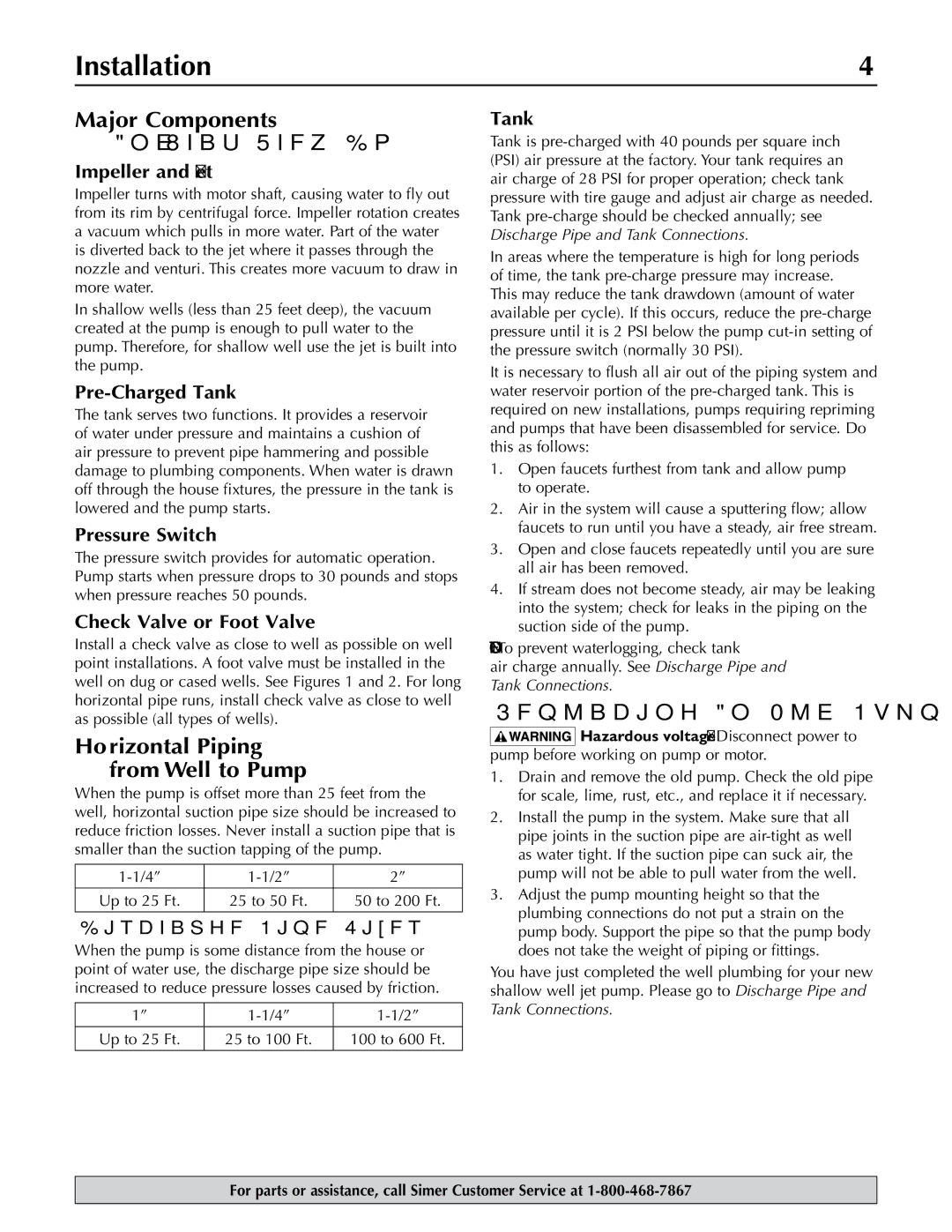
Installation | 4 |
|
|
Major Components
And What They Do
Impeller and Jet
Impeller turns with motor shaft, causing water to fly out from its rim by centrifugal force. Impeller rotation creates a vacuum which pulls in more water. Part of the water is diverted back to the jet where it passes through the nozzle and venturi. This creates more vacuum to draw in more water.
In shallow wells (less than 25 feet deep), the vacuum created at the pump is enough to pull water to the pump. Therefore, for shallow well use the jet is built into the pump.
Pre-Charged Tank
The tank serves two functions. It provides a reservoir of water under pressure and maintains a cushion of air pressure to prevent pipe hammering and possible damage to plumbing components. When water is drawn off through the house fixtures, the pressure in the tank is lowered and the pump starts.
Pressure Switch
The pressure switch provides for automatic operation. Pump starts when pressure drops to 30 pounds and stops when pressure reaches 50 pounds.
Check Valve or Foot Valve
Install a check valve as close to well as possible on well point installations. A foot valve must be installed in the well on dug or cased wells. See Figures 1 and 2. For long horizontal pipe runs, install check valve as close to well as possible (all types of wells).
Horizontal Piping from Well to Pump
When the pump is offset more than 25 feet from the well, horizontal suction pipe size should be increased to reduce friction losses. Never install a suction pipe that is smaller than the suction tapping of the pump.
2” | ||
|
|
|
Up to 25 Ft. | 25 to 50 Ft. | 50 to 200 Ft. |
Discharge Pipe Sizes
When the pump is some distance from the house or point of water use, the discharge pipe size should be increased to reduce pressure losses caused by friction.
1” | ||
|
|
|
Up to 25 Ft. | 25 to 100 Ft. | 100 to 600 Ft. |
Tank
Tank is
In areas where the temperature is high for long periods of time, the tank
It is necessary to flush all air out of the piping system and water reservoir portion of the
1.Open faucets furthest from tank and allow pump to operate.
2.Air in the system will cause a sputtering flow; allow faucets to run until you have a steady, air free stream.
3.Open and close faucets repeatedly until you are sure all air has been removed.
4.If stream does not become steady, air may be leaking into the system; check for leaks in the piping on the suction side of the pump.
NOTICE: To prevent waterlogging, check tank air charge annually. See Discharge Pipe and Tank Connections.
Replacing An Old Pump
![]() Hazardous voltage.. Disconnect power to pump before working on pump or motor.
Hazardous voltage.. Disconnect power to pump before working on pump or motor.
1.Drain and remove the old pump. Check the old pipe for scale, lime, rust, etc., and replace it if necessary.
2.Install the pump in the system. Make sure that all pipe joints in the suction pipe are
3.Adjust the pump mounting height so that the plumbing connections do not put a strain on the pump body. Support the pipe so that the pump body does not take the weight of piping or fittings.
You have just completed the well plumbing for your new shallow well jet pump. Please go to Discharge Pipe and Tank Connections.
For parts or assistance, call Simer Customer Service at
